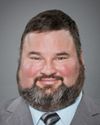I will give you a short answer to a long problem.
One of the difficulties, as mentioned, is that we provide no resources to our family doctors. We like to beat up on them, and often as specialists we tell them, you're doing a poor job, look at the poor levels of blood pressure control, the poor levels of diabetes control, and yet we do nothing to help them.
Some of the primary care reform strategies...for example, now in Alberta the primary care reform strategy is having family physicians get together in groups in what are known as primary care networks, and they're provided with extra funding to hire nurses, pharmacists, and other health care professionals to help them, and so now they don't have to personally deliver the diabetes education. A nurse may help them. A nurse may get the height, weight, the blood pressure, do the initial screening for the family physician.
We've done a tour around the world to see how it's done in other countries. New Zealand uses this model very effectively, for example. Over time we've put our resources into the acute care hospital specialist-based system, and so now the patients, as has been mentioned earlier, expect that they need to see the specialist and at the cocktail party it's, I see an internist for my thyroid, or, I see an endocrinologist. But what about the family doctor?
So we provide this expectation, and in fact the family doctors can do a lot with help from the specialists. In fact, the specialist is somebody the family doctor should use as a tool. We should be there to support the family doctors with advice and in multiple other ways. So we have to elevate the status of the family physician.
The remuneration model, you're right, is not aligned with the behaviour that we want. It does force high volumes of patients through. If we get another health care worker and they do some of the work, the family physician under the current funding models across Canada usually doesn't get paid for that. So alternate funding mechanisms are another mechanism.
In terms of this emphasis on the acute care system, in one university of Canada that I'm aware of, in the last two years not one family medicine graduate has set up a family medicine practice, because they can get paid more money by working as a hospitalist, with no overhead, and at 5 o'clock they're done. And so again it's not only the method but the magnitude of the remuneration for family physicians. We've put them at the bottom of the heap in terms of respect and resources, and we need to turn the pyramid upside down.







